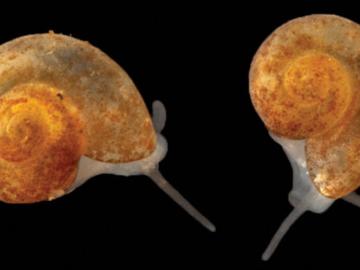
Filter News
Area of Research
- (-) Energy Science (39)
- (-) Nuclear Science and Technology (12)
- (-) Supercomputing (27)
- Advanced Manufacturing (1)
- Biology and Environment (7)
- Computer Science (2)
- Fusion and Fission (2)
- Fusion Energy (4)
- Materials (41)
- Materials for Computing (5)
- National Security (7)
- Neutron Science (14)
- Nuclear Systems Modeling, Simulation and Validation (1)
News Topics
- (-) Advanced Reactors (9)
- (-) Artificial Intelligence (8)
- (-) Chemical Sciences (2)
- (-) Clean Water (1)
- (-) Grid (11)
- (-) Materials Science (17)
- (-) Molten Salt (5)
- (-) Summit (16)
- (-) Transportation (18)
- 3-D Printing/Advanced Manufacturing (23)
- Big Data (10)
- Bioenergy (10)
- Biology (2)
- Biomedical (13)
- Biotechnology (1)
- Composites (1)
- Computer Science (40)
- Coronavirus (14)
- Critical Materials (1)
- Cybersecurity (4)
- Energy Storage (17)
- Environment (22)
- Exascale Computing (3)
- Frontier (1)
- Fusion (7)
- High-Performance Computing (2)
- Isotopes (6)
- Machine Learning (7)
- Materials (2)
- Mathematics (2)
- Mercury (1)
- Microscopy (4)
- Nanotechnology (5)
- National Security (1)
- Neutron Science (12)
- Nuclear Energy (23)
- Physics (4)
- Polymers (6)
- Quantum Science (10)
- Security (2)
- Space Exploration (3)
Media Contacts

In the race to identify solutions to the COVID-19 pandemic, researchers at the Department of Energy’s Oak Ridge National Laboratory are joining the fight by applying expertise in computational science, advanced manufacturing, data science and neutron science.

Sometimes conducting big science means discovering a species not much larger than a grain of sand.

A software package, 10 years in the making, that can predict the behavior of nuclear reactors’ cores with stunning accuracy has been licensed commercially for the first time.

We have a data problem. Humanity is now generating more data than it can handle; more sensors, smartphones, and devices of all types are coming online every day and contributing to the ever-growing global dataset.

Each year, approximately 6 billion gallons of fuel are wasted as vehicles wait at stop lights or sit in dense traffic with engines idling, according to US Department of Energy estimates.

As the second-leading cause of death in the United States, cancer is a public health crisis that afflicts nearly one in two people during their lifetime.

Researchers at ORNL demonstrated that sodium-ion batteries can serve as a low-cost, high performance substitute for rechargeable lithium-ion batteries commonly used in robotics, power tools, and grid-scale energy storage.

A novel approach developed by scientists at ORNL can scan massive datasets of large-scale satellite images to more accurately map infrastructure – such as buildings and roads – in hours versus days.

The prospect of simulating a fusion plasma is a step closer to reality thanks to a new computational tool developed by scientists in fusion physics, computer science and mathematics at ORNL.

An international team of researchers has discovered the hydrogen atoms in a metal hydride material are much more tightly spaced than had been predicted for decades — a feature that could possibly facilitate superconductivity at or near room temperature and pressure.


